Pokémon is a highly successful Japanese media franchise encompassing video games, anime, a trading card game, and more. Set in a universe where humans coexist with diverse creatures called Pokémon, each possessing unique powers. While primarily aimed at children, it enjoys widespread popularity across all age groups. Pokémon is recognized as the highest-grossing media franchise globally and a top-selling video game series.
1932: Inspiration from the film 'Freaks'
In 1932, the film Freaks was released. This film inspired Satoshi Tajiri to name his magazine 'Game Freak'
August 1965: Satoshi Tajiri's Birth
On August 28, 1965, Satoshi Tajiri, the creator of Pokémon, was born in Machida, a suburb of Tokyo. His childhood interest in insect collecting would later inspire the core concept of Pokémon.
March 1983: First Issue of Game Freak Magazine
In March 1983, at the age of 17, Satoshi Tajiri self-published the first issue of his doujinshi magazine titled Game Freak. The magazine helped to fill a gap in the market, as magazines specializing in video games did not yet exist in Japan at the time.
1983: Ishihara Joins Sedic
In 1983, Tsunekazu Ishihara joined Sedic, a company that created video graphics and software. This move marked the beginning of his career in the video game industry and his eventual involvement with the Pokémon franchise.
1985: Comparison to the Nintendo Entertainment System launch
In 1985 the launch budget of the Nintendo Entertainment System was equivalent to the budget allocated to Pokémon's launch.
1986: Formation of Game Freak Development Team
In 1986, Tajiri, Sugimori, and other enthusiasts formed an informal development team called Game Freak, named after Tajiri's magazine, marking the foundation of the company that would later create Pokémon.
1987: Sedic Develops Otocky
In 1987, Sedic, the company Tsunekazu Ishihara worked for, created a video game called Otocky. This marked one of Sedic's ventures into video game development.
1987: Inspiration from Dragon Quest II
In 1987, Tajiri played Dragon Quest II on the Famicom (NES). The game's randomly appearing items of varying rarity inspired Tajiri with the idea to transfer things from one cartridge to another using the Game Link Cable.
March 1989: Nintendo Co-founds Ape, Inc.
In March 1989, Nintendo co-founded Ape, Inc. with Itoi, initially intending to give outside talent a chance to pitch new, innovative games. Tajiri then presented his idea for Pocket Monsters at Ape's office.
April 1989: Incorporation of Game Freak Co., Ltd.
On April 26, 1989, Tajiri officially incorporated Game Freak Co., Ltd., marking the formal establishment of the company that would go on to develop the Pokémon franchise.
1989: Influence from The Final Fantasy Legend
In 1989, Tajiri's idea evolved from other influences such as: gashapon, collectible cards, The Final Fantasy Legend (1989), and petting in Japan. Tajiri originally named his project Capsule Monsters but later changed it to Pocket Monsters, which became Pokemon.
1990: Development Contract Signed for Pocket Monsters
At the beginning of 1990, the development contract for Pocket Monsters was signed, with a planned delivery of the game in October. Tajiri directed the project, working under Ishihara. Ishihara managed the budget, staff, and work schedule, monitored the game's overall progress, and served as a liaison between Game Freak and Nintendo.
1990: Initial Development Phase of Pocket Monsters
The initial development phase of Pocket Monsters took place in 1990, as the staff "tinkered with it from time to time", according to Sugimori. However, Pocket Monsters was suspended indefinitely, and GF turned their focus on other titles
1991: Start of Japan's economic stagnation
From 1991 onwards, Japan's economy stagnated, causing the country to lose its status as an economic superpower.
1991: Ishihara Becomes Vice-President of Ape, Inc.
In 1991, Ishihara became the vice-president of Ape, Inc., further solidifying his involvement in the management and development of innovative games.
1991: Initial Development Phase of Pocket Monsters
The initial development phase of Pocket Monsters continued in 1991, as the staff "tinkered with it from time to time", according to Sugimori. However, Pocket Monsters was suspended indefinitely, and GF turned their focus on other titles
October 1992: Pokémon Popularity Poll
In October 1992, a poll was held among Game Freak staff members to gauge the popularity of the different Pokémon species, helping to determine which ones would be included in the game.
1993: Magic: The Gathering Release
In 1993, Magic: The Gathering was first released in the United States, later gaining popularity in North America, Europe, and Asia.
1994: Resumption of Pocket Monsters Development
After the release of Pulseman in the summer of 1994, Tajiri decided it was time to make a serious effort towards finishing Pocket Monsters. By this point, Game Freak's experience had grown considerably.
1994: EarthBound Release
In 1994, Akihiko Miura, Kōichi Ōyama, and Takumi Akabane who later designed The Pokemon Trading Card Game, worked on EarthBound.
November 1995: Creatures, Inc. Founded
In November 1995, as Pocket Monsters Red and Green were nearing completion, Kagemaru Himeno founded Creatures, Inc. and co-ownership of the Pokemon property was assigned to Creatures.
December 1995: Pocket Monsters Red and Green Completion
In December 1995, Pocket Monsters Red and Green were finished, but the initial release date was missed.
1995: Game Boy Revival
In 1995, the Game Boy experienced a small revival in Japan due to the success of Mario's Picross.
1995: Pokemon Trading Card Game pitched to Nintendo
Sometime in 1995, Ishihara pitched the Pokemon Trading Card Game to Nintendo. They agreed to have the cards manufactured and Satoshi Kayama, director of Media Factory, offered to distribute it, signing the contract near the end of 1995.
February 1996: Game Boy Release
In February 1996, the Pokémon franchise originated as a pair of role-playing games developed by Game Freak, from an original concept by Satoshi Tajiri, and released on the Game Boy. These games became sleeper hits and paved the way for various adaptations and expansions of the franchise.
February 1996: Pocket Monsters Red and Green Published
On February 27, 1996, Pocket Monsters Red and Green were published after manufacturing cartridges, manuals and packages.
February 1996: Pocket Monsters Manga Adaptation
On February 28, 1996, the day after Red and Green's release, the first chapter of the Pocket Monsters manga adaptation by Kosaku Anakubo was featured in the March/April issue of Bessatsu CoroCoro Comic.
April 1996: "Legendary Pokemon Offer" Announcement
On April 15, 1996, the May issue of CoroCoro announced the "Legendary Pokemon Offer", centered around Mew, increasing word-of-mouth and surpassing 1 million units sold by September.
July 1996: Game Boy Pocket Release
On July 21, 1996, the Game Boy Pocket, a slimmer and improved version of the Game Boy, was released in Japan.
August 1996: Shogakukan Convinced of Anime Adaptation
By August 1996, Kubo had become convinced of Pokemon's potential, and believed Shogakukan should create an anime adaptation.
October 1996: Trading Card Game Release
On October 20, 1996, the first set of the Pokemon Trading Card Game was released with booster packs containing 10 randomly inserted cards, becoming an instant success.
1996: Nintendo of America Assesses Pokémon for North American Launch
In 1996, Nintendo of America's founder, Minoru Arakawa, played the Pokémon games at Shoshinkai 1996 and saw promise in them. However, Nintendo of Japan had no immediate plans to release them outside Japan. Upon returning to America, Arakawa tested the game on employees, who were skeptical about its potential success in the US due to the perceived lack of interest in RPGs and the game's 'kawaii' aesthetic.
March 1997: Pokemon Card Sales Milestone
By the end of March 1997, six months after its launch, 87 million Pokemon cards had been shipped.
April 1997: Copyright Council Formed
Beginning in April 1997, a copyright council headed by Ishihara met every Tuesday to discuss Pokemon-related events, Shogakukan publication plans, and merchandise proposals, setting a high bar for merchandising.
April 1997: Pocket Monsters Anime Premieres
On April 1, 1997, Pocket Monsters premiered on TV Tokyo in the 19:00 – 19:30 timeslot on Tuesdays, becoming the highest-rated program on TV Tokyo by November and widening Pokemon's audience.
May 1997: Nagatanien Sells Pokemon Branded Products
From May 1997, Nagatanien began selling Pokemon-branded curry, furikake, and baking mixes.
December 1997: Toshoku's Collapse
In December 1997, Nagatanien was hit hard by the collapse of one of its biggest sales channels, Toshoku, in what was then the third-largest bankruptcy in Japan's postwar history. However, their Pokemon-licensed products allowed them to report net profits in fiscal years '97 and '98.
December 1997: "Dennō Senshi Porygon" Broadcast Crisis
On the evening of December 16, 1997, the Pokemon franchise was hit by a crisis related to the broadcast of the anime's 38th episode, "Dennō Senshi Porygon" (Computer Warrior Porygon), causing seizures in some viewers.
1997: Tamagotchi fad
In 1997, the Tamagotchi fad, centered around a portable digital pet device, was said to have "paved the way for Pokémon".
1997: Approval of Pokémon Localization Project
In late November 1997, Nintendo of Japan's president, Hiroshi Yamauchi, officially approved the Pokémon localization project and announced it at Space World 1997 after being convinced by Alfred R. Kahn of 4Kids Entertainment. This decision came shortly before the "Dennō Senshi Porygon" incident, which made some people hesitant about the overseas introduction.
March 1998: Pokemon Product Licensing
By March 1998, 35 companies offered licensed Pokemon goods, and there were approximately 700 Pokemon products.
March 1998: Pokemon Card Production Milestone
By March 1998, a total of 499 million Pokemon cards had been produced in Japan.
March 1998: Production of Pokémon Cards Reaches 499 Million
By March 1998, approximately half a year before Pokémon's overseas launch, 499 million Pokémon cards had been produced.
April 1998: Pokémon Anime Returns After "Dennō Senshi Porygon" Incident
After a hiatus due to the "Dennō Senshi Porygon" incident, the Pokémon anime series returned to broadcasting on April 16, 1998, following the implementation of new guidelines to prevent similar incidents.
April 1998: Pokémon Anime Presented at MIP TV in Cannes
From April 3–8, 1998, the Pokémon anime series was presented at MIP TV in Cannes, France, by 4Kids and Lacey Entertainment. Broadcasters were initially hesitant due to its Japanese origins and preferred to see how it would perform in the US.
April 1998: Founding of Pokémon Center Co. Ltd.
On April 23, 1998, Pokémon Center Co. Ltd. was established as a collaborative effort between Nintendo, Creatures, and Game Freak. The company was created to manage specialized merchandise stores known as Pokémon Centers.
July 1998: Premiere of Pocket Monsters the Movie: Mewtwo Strikes Back
On July 18, 1998, Pocket Monsters the Movie: Mewtwo Strikes Back (Pokémon: The First Movie) premiered in Japan, becoming the fourth highest-grossing film of the year. The movie was in the storyboard stage when the "Dennō Senshi Porygon" incident occurred.
July 1998: Opening of the First Pokémon Center in Tokyo
On July 18, 1998, the first Pokémon Center location opened in Nihonbashi, Tokyo. This marked the beginning of a series of specialized merchandise stores managed by Pokémon Center Co. Ltd.
September 1998: Pocket Monsters Pikachu Release
On September 12, 1998, Pocket Monsters Pikachu (Pokémon Yellow: Special Pikachu Edition) was released in Japan as an adaptation of Pokemon Blue to resemble the TV series more.
September 1998: Pokémon Anime Broadcasts in Australia and New Zealand
On September 28, 1998, the American version of the Pokémon anime started broadcasting in Australia and New Zealand, marking the initial expansion of the series beyond North America.
September 1998: Pokémon Anime Premieres in North America
The Pokémon anime was first broadcast in North America on September 7, 1998, marking the initial launch of the series in the region.
November 1998: Release of Game Boy Color Coincides with Pokémon Launch
On November 23, 1998, the Game Boy Color was released, coinciding with the North American launch of Pokémon.
December 1998: Pokémon Anime Becomes Top-Rated Children's Show
By December 1998, the Pokémon anime had become the highest-rated syndicated children's show during the weekdays in North America, attracting the attention of media companies like Warner Bros. and Saban Entertainment/Fox Family Worldwide.
1998: 4Kids Secures Agreement to Americanize Pokémon Anime
At NATPE 1998, Norman J. Grossfeld of 4Kids secured an agreement with ShoPro for carte blanche to Americanize the Pokémon anime. Despite initial disinterest from national TV stations and financial risks, Kahn self-financed the localization, offering the show to local stations for free in exchange for ad revenue sharing, with assistance from Nintendo of America.
1998: Release of Dragon Warrior Monsters and Robopon Sun and Star
In 1998, Dragon Warrior Monsters and Robopon Sun and Star were released, serving as examples of games that were compared to Pokémon due to their monster-taming mechanics.
1998: Establishment of The Pokémon Company (TPC)
In 1998, Nintendo, Game Freak, and Creatures established The Pokémon Company (TPC) to manage the Pokémon property within Asia, marking a collaborative effort to oversee the franchise's development and expansion in the region.
1998: Global Export and "Pokémania"
In 1998, Pokémon was exported to the rest of the world, leading to an unprecedented global phenomenon called "Pokémania". This marked the beginning of Pokémon's widespread popularity and cultural impact.
January 1999: Pokémon Anime Debuts in Beijing
On January 10, 1999, the Pokémon anime series debuted in Beijing, continuing its expansion into Asian markets.
January 1999: Official Launch of Pokémon Trading Card Game in North America
On January 9, 1999, the Pokémon Trading Card Game was officially launched nationwide in North America, following pre-sales in select stores in December. Nintendo contracted Wizards of the Coast to localize the card game.
February 1999: Pokémon Launches on Kids' WB and Breaks Records
On February 13, 1999, Pokémon launched on the Kids' WB national television block, with the debut episode becoming the most-watched premiere in Kids' WB's history.
March 1999: Pokémon Cards Shipped Reach 764 Million
By March 1999, the total number of Pokémon cards shipped had reached 764 million, indicating rapid growth in popularity.
April 1999: Pokémon Phenomenon Recognized in the US
By April 1999, there was a general consensus in the US that Pokémon had become a phenomenon, often referred to as "Pokémania".
April 1999: Columbine High School Massacre Occurs
On April 20, 1999, the Columbine High School massacre occurred, leading to increased scrutiny of violent media, including television, music, and games. Compared to these media, Pokémon was considered relatively tame.
July 1999: Pokémon Anime Airs in South Korea
On July 14, 1999, the Pokémon anime series began airing in South Korea, further expanding its presence in Asia.
August 1999: Scarcity of Pokémon Goods Reported
On August 3, 1999, a Milwaukee Journal Sentinel article cited a Toys "R" Us manager stating that 600 booster packs would last only 24 hours, indicating severe scarcity of Pokémon goods, especially cards, and companies missing profits. Wizards of the Coast hired more employees and printers to meet demand.
September 1999: Class-action Lawsuit Filed Against Nintendo, Wizards of the Coast, and 4Kids
In September 1999, a class-action lawsuit was filed in the US against Nintendo of America, Wizards of the Coast, and 4Kids, alleging that the Pokémon booster packs were a form of lottery and promoted gambling in children.
November 1999: Peak of Pokémania and Release of The First Movie
In November 1999, North America experienced the peak of Pokémania, coinciding with the release of "Pokémon: The First Movie". The movie achieved significant success despite mixed reviews. Burger King launched a promotional campaign to support the film's release but encountered supply shortages for the included Pokémon toys. Later, in December, Burger King recalled its Poké Ball toy after a tragic incident.
November 1999: Premiere of Pokémon: The First Movie in the United States and South Park Satirizes Pokémon
In November 1999, Pokémon: The First Movie premiered in the United States to negative reviews, and the adult animated series South Park satirized Pokémon in the episode "Chinpokomon", portraying it as a low-quality product line used in a Japanese invasion plan.
November 1999: Factories Increase Toy Production Amidst Scarcity
In November 1999, USA Today reported that factories making Hasbro's Pokémon toys had expanded production by 20 times, but demand still exceeded supply, and scarcity of Pokémon merchandise was occurring in Europe as well.
November 1999: Peak of Pokémon-related incidents in the US
In November 1999, incidents of violence, burglaries, robberies, and shoplifting related to Pokémon cards peaked in the US, often involving underage individuals and high prices on the grey market.
December 1999: Pokémon Anime Begins Broadcasting in Scandinavia
In December 1999, the Pokémon anime series began broadcasting in Denmark, Norway, and Sweden, further expanding its reach in Europe.
1999: Nintendo Sees Profit Increase Due to Pokémon Craze
In 1999, Nintendo experienced a 250% increase in profits compared to the previous year, reaching a six-year high, largely due to the Pokémon craze, which accounted for over 30% of Nintendo's revenue. Pokémon's popularity also boosted sales of the Game Boy line.
1999: Peak of Pokémania in North America
In 1999, Pokémania peaked in North America before slowing down throughout the following year.
1999: Pokémon Fad in the Western World
In 1999, Pokémon was an unprecedented, ubiquitous fad in the Western world, eliciting mixed responses from parents and teachers.
1999: Investors Short Pokémon Licensee Stocks
In the summer of 1999, a massive run on stocks of publicly traded Pokémon licensees caused their value to increase dramatically. However, by November, most investors were shorting their shares, realizing that Pokémon was a fad that would peak and fall at some point.
February 2000: Premiere of Pokémon: The First Movie in European countries
In February 2000, Pokémon: The First Movie premiered in European countries to negative reviews from film critics.
February 2000: Pokémon Anime Debuts in Israel
In February 2000, the Pokémon anime series debuted in Israel, where it became a success despite the absence of an official release of the Red and Blue video games.
March 2000: Total Pokémon Cards Shipped Reaches 4.255 Billion
By March 2000, the total number of Pokémon cards shipped had grown to 4.255 billion, manufactured in both Japanese and American factories, showing the continued expansion of the card game's market.
April 2000: Peak of Pokémon-related Delinquency in England
In April 2000, Pokémon-related delinquency reached a head in England, with high prices on the grey market tempting older kids to take advantage of weaker children.
April 2000: Anime Loses No. 1 Spot and Digimon Surpasses Pokémon
On April 29, 2000, the Pokémon anime was bumped off Kids' WB's No. 1 spot after 54 weeks. Around the same time, Digimon surpassed Pokémon at Fox Kids.
September 2000: 4Kids Named Fastest-Growing Company in America
In the September 4, 2000, issue of Fortune magazine, 4Kids, initially a little-known firm, was named the fastest-growing company in America due to its thirty-fold increase in revenues from Pokémon.
October 2000: Reformatting of Pokémon Center Co. Ltd. into The Pokémon Company
In October 2000, the Pokemon Center Co. Ltd. was reformatted and officially renamed as The Pokémon Company (TPC). This change was part of Tsunekazu Ishihara's long-term goals for the franchise and aimed to centralize the global management of Pokémon. Satoru Iwata was involved in the company's creation.
October 2000: Release of Pokémon Gold and Silver in North America
On October 15, 2000, Pokémon Gold and Silver were released in North America. These games served as successors to the original Red, Green, and Blue versions.
2000: Global Reach of Pokémon by End of 2000
By the end of 2000, Pokémon games had been released in 70 countries, the anime was broadcast in 51 countries, the films were released in 33 countries, and the cards had been translated into 11 languages, demonstrating the franchise's extensive global reach.
2000: Peak of Pokémania
By the year 2000, "Pokémania" reached its peak, marking the height of Pokémon's global popularity and influence on popular culture.
2000: Development of Pokémon Ruby and Sapphire Begins
From 2000 to 2002, Game Freak developed Pokémon Ruby and Sapphire for the newly released Game Boy Advance. Masuda was promoted to director, and Tajiri became executive director.
2000: Height of Pokémon Fad in the Western World
In 2000, Pokémon was an unprecedented, ubiquitous fad in the Western world, eliciting mixed responses from parents and teachers.
January 2001: Collapse of Pokémon Trading Card Market in the US
On January 20, 2001, The New York Times reported that the Pokémon trading card market had collapsed in the United States.
February 2001: Establishment of Pokémon USA
In February 2001, Pokémon USA (PUSA) was established as an affiliated firm of The Pokémon Company. Tatsumi Kimishima was appointed as the company's first president.
April 2001: Release of Pokémon Gold and Silver in Europe
On April 6, 2001, Pokémon Gold and Silver were released in Europe, following their North American release in October 2000.
June 2001: Survey Confirms Waning Popularity of Pokémon in the UK
A June 2001 survey in the United Kingdom confirmed that Pokémon's popularity was waning, indicating a decline in the craze's impact.
October 2001: 4Kids Entertainment Signs New Contract with PUSA
In October 2001, 4Kids Entertainment signed a new contract with Pokémon USA (PUSA), continuing to serve as Pokémon's exclusive licensing agent and anime localizer.
2001: Opening of American Pokémon Center in New York City
In 2001, an American Pokémon Center opened in New York City, expanding the presence of the merchandise stores beyond Japan.
2002: End of Pokémania Craze
Around 2002, the initial "Pokémania" craze subsided, but Pokémon transitioned into a fixture in popular culture, with continuous releases of new products.
2002: Deterioration of Relationship Between PUSA and Wizards of the Coast
By 2002, the relationship between Pokémon USA (PUSA) and Wizards of the Coast had deteriorated, leading to PUSA poaching at least seven high-profile employees from Wizards.
2002: Akira Chiba Succeeds Tatsumi Kimishima as President of Pokémon USA
In 2002, Akira Chiba succeeded Tatsumi Kimishima as the president of Pokémon USA (PUSA).
2002: Game Freak Plans Sequels Diamond and Pearl
In 2002, Game Freak started planning their sequels to Ruby and Sapphire, which would be Diamond and Pearl. Masuda was concerned that the end of Pokémania indicated the end of Pokémon as a whole.
2002: Weekly Pokémon Broadcasting Station Airs
In 2002, Weekly Pokémon Broadcasting Station aired on TV Tokyo.
March 2003: Establishment of Pokémon UK
In March 2003, Pokémon UK was established in London as a British representative of The Pokémon Company.
March 2003: PUSA Informs Wizards Their Contract Will Not Be Renewed
In March 2003, Pokémon USA (PUSA) informed Wizards of the Coast that their contract would not be renewed and that Wizards would not be distributing the new Ruby & Sapphire card set.
October 2003: Wizards Files Suit Against Pokémon USA
On October 1, 2003, Wizards of the Coast filed suit against Pokémon USA, alleging that the defendant had seized their intellectual property and trade secrets and illegally tried to gain advantage over them in the competitive trading card market. The case was later settled out of court.
2004: Planning Remakes of Older Installments
In 2004, Game Freak began planning remakes of older installments, starting with FireRed and LeafGreen, remakes of the original Red and Green.
2004: End of Weekly Pokémon Broadcasting Station Airing
In 2004, Weekly Pokémon Broadcasting Station ended airing on TV Tokyo.
2004: Pokémon Reactions as Moral Panic
In 2004, anthropologist Christine R. Yano claimed that reactions to Pokémon at one point constituted a moral panic, though it was primarily aimed at children.
2004: Pokémon's Impact on Nintendo's Survival Highlighted
In 2004, scholars David Buckingham and Julian Sefton-Green suggested that Nintendo might have struggled to survive without the success of Pokémon, highlighting the franchise's crucial role in the company's profitability.
December 2005: Agreement Between PUSA and 4Kids Entertainment Not Renewed
On December 23, 2005, it was announced that the agreement between PUSA and 4Kids Entertainment would not be renewed and would expire on December 31, with PUSA moving all licensing in-house.
2005: Remodeling of New York Pokémon Center into Nintendo World
In 2005, the American Pokémon Center in New York City was remodeled and transformed into Nintendo World, later renamed Nintendo New York.
2006: Planning of Diamond and Pearl
In 2006, Game Freak had been planning Diamond and Pearl as sequels to Ruby and Sapphire.
2006: Diamond and Pearl Games referred to as Gen 4
In 2006, Junichi Masuda referred to Diamond and Pearl (2006) as Gen 4.
April 2007: Release of Pokémon Diamond and Pearl in North America
On April 22, 2007, Pokémon Diamond and Pearl were released in North America. These titles were designed based on the Nintendo DS's features and allowed for global trading and battling via WiFi.
2007: Release of Spectrobes
In 2007, Spectrobes was released, an example of a game that was compared to Pokémon due to its monster-taming mechanics.
March 2009: Release of Pokémon Platinum in North America
On March 22, 2009, Pokémon Platinum was released in North America.
September 2009: Release of Pokémon HeartGold and SoulSilver in Japan
On September 12, 2009, Pokémon HeartGold and SoulSilver were released in Japan as part of Generation IV. These games are remakes of Gold and Silver.
2009: Release of Invizimals
In 2009, Invizimals was released, an example of a game that was compared to Pokémon due to its monster-taming mechanics.
2009: Merger of Pokémon USA and Pokémon UK to Form TPCi
In 2009, Pokémon USA and Pokémon UK merged to form the Pokémon Company International (TPCi). This subsidiary manages the Pokémon franchise outside of Asia.
2009: Pokémon Company International (TPCi) Manages Franchise Outside Asia
Since 2009, the Pokémon Company International (TPCi), a subsidiary of TPC, has managed the franchise in all regions outside Asia, expanding the Pokémon Company's influence on the property worldwide.
March 2010: Release of Pokémon HeartGold and SoulSilver in North America
On March 14, 2010, Pokémon HeartGold and SoulSilver were released in North America. These remakes aimed to balance familiarity for original players with new content for newcomers.
September 2010: Release of Pokémon Black and White in Japan
On September 18, 2010, Pokémon Black and White were released in Japan for the DS. These games feature enhanced visuals and increased use of 3D graphics.
March 2011: Release of Pokémon Black and White in North America
On March 6, 2011, Pokémon Black and White were released in North America. The developers introduced over 150 new Pokémon to evoke novelty and provide a level playing field.
2011: Pokémon Games Exclusivity on Nintendo Consoles Ends
Until 2011, Pokémon games were exclusively released on Nintendo's consoles.
June 2012: Release of Pokémon Black 2 and White 2 in Japan
On June 23, 2012, Pokémon Black 2 and White 2 were released in Japan for the DS. These games were designed to maintain continuity with the game world in Black and White.
October 2012: Release of Pokémon Black 2 and White 2 in North America
On October 7, 2012, Pokémon Black 2 and White 2 were released in North America. Director Masuda aimed to find a "fine balance" to appeal to both newcomers and returning players.
October 2013: Worldwide Release of Pokémon X and Y
On October 12, 2013, Pokémon X and Y were released worldwide for the 3DS. These games are the first in the series to have a simultaneous global launch. The developers focused on the themes of "beauty", "bond", and "evolution".
2013: X and Y Games referred to as 6th Generation
In 2013, Junichi Masuda referred to X and Y (2013) as the 6th generation.
November 2014: Worldwide Release of Pokémon Omega Ruby and Alpha Sapphire
On November 21, 2014, Pokémon Omega Ruby and Alpha Sapphire were released worldwide for the 3DS. These games are remakes of Ruby and Sapphire and adopted X and Y's core game mechanic with enhanced 3D graphics.
2014: Google Maps Pokémon Challenge April Fool's Joke
In 2014, the concept for Pokémon Go originated as a Google April Fools' Day joke known as the 'Google Maps Pokémon Challenge'. The prank was conceived by Tsunekazu Ishihara and Satoru Iwata and would later be developed into the full-fledged game.
July 2016: Pokémon Go Generates Over $160 Million
By the end of July 2016, Pokémon Go had generated more than $160 million through in-game purchases. The game was generating around $10 million in revenue every day that month, surpassing revenue records set by Clash of Clans and Candy Crush. The average daily usage of the app on Android devices in July 2016 exceeded that of Snapchat, Tinder, Twitter, Instagram, and Facebook.
September 2016: Pokémon Go Revenue Exceeds $440 Million
By September 2, 2016, Pokémon Go had generated more than $440 million in worldwide revenue. By September 30, 2016, the game had received 500 million downloads and grossed $470 million in 80 days. It reached the $600 million revenue milestone after only 90 days on the market, becoming the fastest mobile game ever to do so.
November 2016: Worldwide Release of Pokémon Sun and Moon
In November 2016, Pokémon Sun and Moon were released worldwide for the 3DS. The games were inspired by Hawaii, chosen for its warm sunlight, clear moonlight, and unique biomes, influencing the games' regional Pokémon variance concept. The director, Ohmori, aimed to emphasize Pokémon as living creatures. The release coincided with the 20th anniversary of Pokémon.
2016: Pokémon Go Mobile Game Craze
In 2016, The Pokémon Company began developing and licensing Pokémon titles for the mobile phone market with the rise of the smartphone, most notably Pokémon Go, an augmented reality game developed by Niantic that spawned a worldwide craze in the summer of 2016.
2016: Release of Pokémon Go
In 2016, the Pokémon franchise saw the release of Pokémon Go, a mobile augmented reality game. The app was based on a Google April Fools' Day joke from 2014. Tsunekazu Ishihara, a fan of Niantic's Ingress, saw the game's concept as a perfect match for Pokémon.
November 2017: Worldwide Release of Pokémon Ultra Sun and Ultra Moon
In November 2017, Pokémon Ultra Sun and Ultra Moon were released worldwide. These enhanced versions of the original games added an alternate storyline, additional characters, Pokémon, and other features, being considered the culmination with the 3DS.
November 2018: Release of Pokémon: Let's Go, Pikachu! and Let's Go, Eevee!
On November 16, 2018, Pokémon: Let's Go, Pikachu! and Let's Go, Eevee! were released for the Nintendo Switch as part of Generation VII. Inspired by Pokémon Yellow, the games aimed to introduce newcomers and Pokémon Go players to the Pokémon series and catered to old players by featuring the original 151 Pokémon.
2018: Release of Detective Pikachu
In 2018, Detective Pikachu, an adventure game, was released as a spin-off from the core Pokémon role-playing games (RPGs).
2018: Miyamoto Downplays His Role in Pokémon
In a 2018 retrospect, Shigeru Miyamoto downplayed his role in advising Tajiri on Pokémon, stating that his contributions were limited, although he did suggest the use of different colored cartridges for the game.
November 2019: Release of Pokémon Sword and Shield
On November 15, 2019, Pokémon Sword and Shield were released for the Nintendo Switch, marking the debut of Generation VIII. Director Shigeru Ohmori designed the games around the theme of becoming 'the greatest or strongest', utilizing the Switch's high resolution and TV connectivity for the Dynamax/Gigantamax mechanic.
2019: Release of Detective Pikachu Film
In 2019, the live-action/animated film Detective Pikachu, based on the video game of the same name, was released.
June 2020: Release of Pokémon Sword and Shield DLC Part 1: The Isle of Armor
On June 17, 2020, Part 1 of the DLC for Pokémon Sword and Shield, titled 'The Isle of Armor', was released. The DLC included additional storylines, places, Pokémon, characters, and other features.
October 2020: Release of Pokémon Sword and Shield DLC Part 2: The Crown Tundra
On October 22, 2020, Part 2 of the DLC for Pokémon Sword and Shield, titled 'The Crown Tundra', was released. Similar to Part 1, it included additional storylines, places, Pokémon, characters, and other features.
2020: Resurgence in Popularity of Pokémon Cards
In 2020, the COVID-19 pandemic sparked a resurgence in the popularity of and interest in Pokémon cards, further fueled by YouTubers and influencers like Logan Paul. This led to severe supply shortages and inappropriate behavior in retail outlets. The Pokémon Company responded by reprinting impacted products to stabilize prices and ensure accessibility.
November 2021: Release of Pokémon Brilliant Diamond and Shining Pearl
On November 19, 2021, Pokémon Brilliant Diamond and Shining Pearl were released for the Switch as part of Generation VIII. These remakes of Diamond and Pearl were developed by ILCA and retained traditional game mechanics with enhanced 3D graphics as part of Pokémon's 25th-anniversary celebration.
2021: Release of Monster Crown
In 2021, Monster Crown was released, an example of a game that was compared to Pokémon due to its monster-taming mechanics.
2021: Release of Pokémon the Movie: Secrets of the Jungle
In 2021, Pokémon the Movie: Secrets of the Jungle, the most recent of 23 anime films released, was released.
2021: Japan Post Releases Limited Edition Pokémon Postage Stamps
In 2021, the Japan Post released limited edition postage stamps and stamp box. The stamp boxes had promo Pokémon cards that were inspired by the postage stamps Beauty Looking Back and Moon Goose. The postage stamps depicted Pokémon across the four seasons.
January 2022: Release of Pokémon Legends: Arceus
On January 28, 2022, Pokémon Legends: Arceus was released for the Switch as a prequel to Diamond and Pearl, and part of Generation VIII. The game represented a new approach for the series, adding real-time elements and drawing similarities to The Legend of Zelda: Breath of the Wild in its landscape and gameplay.
November 2022: Release of Pokémon Scarlet and Violet
In November 2022, Pokémon Scarlet and Violet were released for the Switch, introducing Generation IX. These games were the first to feature an entirely open-world experience and departed from traditional gym mechanics, offering unique road quests and improved multiplayer for up to four players.
September 2023: Release of Pokémon Scarlet and Violet DLC: The Teal Mask
On September 12-13, 2023, The Teal Mask, the first part of The Hidden Treasure of Area Zero DLC for Pokémon Scarlet and Violet, was released.
October 2023: Premiere of Pocket ni Boken o Tsumekonde
On October 20, 2023, Pocket ni Boken o Tsumekonde, a live-action television drama produced by The Pokémon Company and TV Tokyo, premiered on TV Tokyo.
December 2023: Release of Pokémon Scarlet and Violet DLC: The Indigo Disk
On December 14, 2023, The Indigo Disk, the second part of The Hidden Treasure of Area Zero DLC for Pokémon Scarlet and Violet, was released.
January 2024: Pokémon Species Count
As of January 2024, 1,025 Pokémon species have been introduced in the Pokémon franchise, showcasing the continuous expansion and diversification of the game's universe.
January 2024: Release of the Epilogue to The Hidden Treasure of Area Zero DLC for Pokémon Scarlet and Violet
On January 11, 2024, an epilogue to The Hidden Treasure of Area Zero for Pokémon Scarlet and Violet was released.
January 2024: Existence of 24 Pokémon Merchandise Shops in Japan
As of January 2024, there are a total of 24 Pokémon merchandise shops operational in Japan, showcasing the continued presence and popularity of Pokémon Centers.
February 2024: Announcement of Pokémon Legends: Z-A
On February 27, 2024, TPCi announced Pokémon Legends: Z-A, a successor to Legends: Arceus, set to release in 2025 for the Switch and returning to the Kalos region from X and Y.
March 2024: 64.8 Billion Pokémon Cards Produced
As of March 2024, according to the official website of The Pokémon Company, 64.8 billion Pokémon cards have been produced.
March 2024: Over 480 Million Pokémon Game Units Sold Worldwide
As of March 2024, according to the official website of the Pokémon Company, over 480 million Pokémon game units have been sold worldwide.
April 2024: Pokémon Horizons – The Search for Laqua Season Airs
On April 12, 2024, Pokémon Horizons – The Search for Laqua, the current season of the anime, started airing. The anime originally focused on Ash Ketchum and his travels across the Pokémon world with his partner, Pikachu but introduced two new protagonists, Liko and Roy.
June 2024: La Poste (France) Issues Booklet of Pokémon Stamps
On June 17, 2024, La Poste (France) issued a booklet of 12 stamps dedicated to Pokémon.
2024: Pokémon Franchise Reaches $100 Billion in Revenue
By 2024, the Pokémon franchise had earned a total of $100 billion US dollars, making it the highest-grossing media franchise ever.
2024: Equivalent of Nintendo of America's investment in 2024
In 2024 the equivalent of Nintendo of America's investment would be c. $9.65 million.
2024: Equivalent of Pokémon's launch budget in 2024
In 2024 the equivalent of the Pokémon's launch budget would be c. $96.46 million.
2024: Release of Palworld
In 2024, Palworld was released, an example of a game that was compared to Pokémon due to its monster-taming mechanics.
2025: Pokémon Anime Expected to Consist of over 1,300 episodes across 27 seasons
By 2025, the Pokémon anime is expected to consist of over 1,300 episodes across 27 seasons.
2025: Pokémon Legends: Z-A Planned Release
In 2025, the expected release year for Pokémon Legends: Z-A, which returns to the Kalos region seen in X and Y and is a successor to Legends: Arceus
Mentioned in this timeline
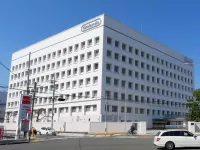
Nintendo is a Japanese multinational video game company based in...
The Nintendo Switch is a video game console developed by...
Burger King founded in as Insta-Burger King is a global...
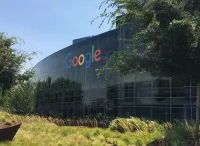
Google LLC is a multinational technology company specializing in online...
New Zealand is an island country located in the southwestern...
CNN Cable News Network is a multinational news organization founded...
Trending
2 months ago Kansas Jayhawks face UCF Knights: Sorsby's performance crucial in Big 12 matchup.
Jaylen Warren is a professional American football running back currently playing for the Pittsburgh Steelers in the NFL He had...
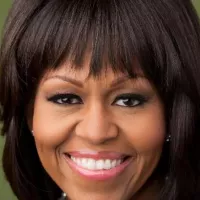
7 months ago Michelle Obama Reveals Barack's Joke After Her Mother's Death and Pope's Viewing Habits.
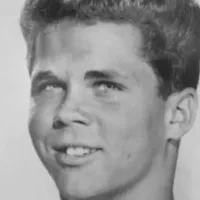
Tony Dow was a renowned American actor producer director and sculptor best known for his role as Wally Cleaver in...
2 months ago IREN Stock Surges on AI Cloud Deals and Bitcoin Mining Integration.
10 days ago Lawsuit Filed Over KISD Stabbing; Killeen Principal Resigns From Ira Cross
Popular

Candace Owens is an American conservative political commentator and author...
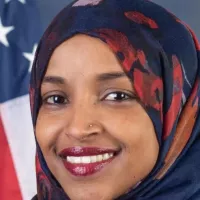
Ilhan Omar is an American politician currently serving as the...

XXXTentacion born Jahseh Dwayne Ricardo Onfroy was a controversial yet...

Frederick Christ Trump Sr - was an American real estate...
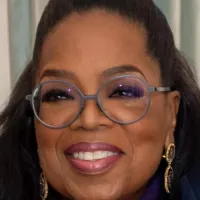
Oprah Winfrey an American talk show host television producer actress...
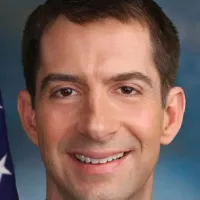
Tom Cotton is an American politician and Army veteran currently...




